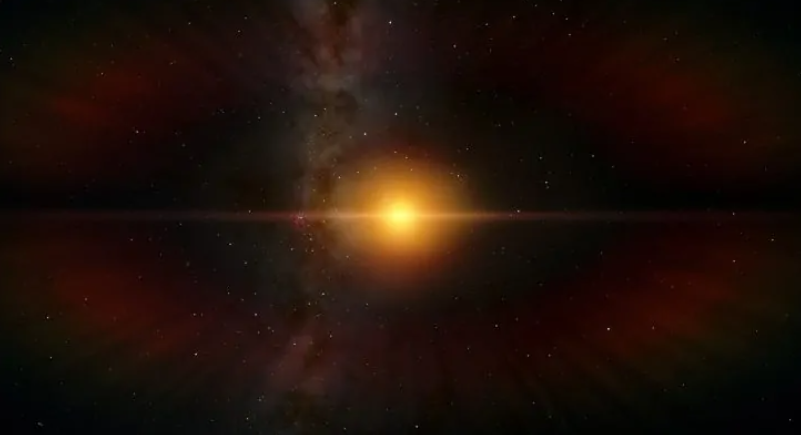
Mankind’s relationship with the universe is best described by Buzz Lightyear’s catchphrase, “To infinity and beyond!”
In the age of innovation, each day brings us closer to what is beyond. Locating and studying exoplanets is one of the most recent efforts in space travel. Learn more about their properties and potential through these facts. It might make you feel like a speck in the universe – but perhaps in a good way.
Earth-like exoplanets could support alien life.
It might sound crazy to us, but believers of the extraterrestrial aren’t exactly wrong. In fact, a handful of the confirmed exoplanets lie within the habitable zone. Also called the Goldilocks zone, this refers to the range where a planet’s distance from a star can still support life. Exoplanets within a star’s habitable zone have the potential to carry life under the right atmospheric pressure. Scientists estimate that the nearest Earth-like exoplanet could be 12 lightyears away from Earth.
The darkest planet in the known universe is an exoplanet.
For one, the darkest planet known to man is the TrES-2b exoplanet. This exoplanet reflects less than 1% of its host star’s light. As a result, TrES-2b reflects less light than coal or black acrylic paint. Hot Jupiter exoplanets typically have a lot of sodium and potassium in their atmosphere, hence the dark color. However, the exact chemical compound that makes TrES-2b darker than the rest remains undiscovered.
Astronomers identified the color of an exoplanet for the first time in 2013.
People might have started studying extrasolar planets in the 1990s, but it wasn’t until 2013 that an exoplanet’s color was properly identified for the first time. Astronomers measured the albedo of HD 189733b to find that it was a deep, dark blue.
From there, they were also able to identify the colors of other exoplanets. GJ 504 b was calculated to have a magenta color, while Kappa Andromedae b would appear reddish up-close. Astronomers believe that helium planets are either white or grey.
10 billion Earth-like planets could exist within the Milky Way.
If we’re talking about the rest of the universe, this number expands tenfold. Kepler 22b made history in 2011 as the first exoplanet found within the habitable zone. When the news broke out, people were quick to label it as a “super Earth” that we could possibly live in. However, with a distance of 587 light-years from Earth, it would take eons to reach this exoplanet. Currently, it is still under observation.
NASA’s Kepler Space Telescope discovered most of the exoplanets we know now.
First launched in 2009, NASA launched Kepler to locate extrasolar planets. Initially, the Kepler mission was supposed to last only 3.5 years. However, it wasn’t until 2018 that NASA retired the Kepler project after the telescope got incapacitated. All in all, Kepler observed 530,506 stars and located 2,662 exoplanets. Now, NASA’s Transiting Exoplanet Survey Satellite (TEES) continues the search for exoplanets, discovering 1730 candidates and 41 confirmed exoplanets so far.
Stars with higher metallicity are more likely to host exoplanets.
Most physical matter in the universe consists of hydrogen and helium. Metallicity is the term astronomers use to describe all elements other than hydrogen and helium.
According to data gathered from the Kepler telescope, stars with more varied elements are more likely to have extrasolar planets orbiting around them.
Gravitational microlensing uses other stars to spot an exoplanet.
Gravitational microlensing is similar to radial velocity, except this method involves another star aside from the exoplanet’s host. When one star passes in front of another star, its gravity acts like a lens that magnifies the other star’s light. If the “lens” star has a planet orbiting it, the exoplanet’s mass increases the magnifying effect. This is what astronomers used to locate over 20 exoplanets.
Most exoplanets were discovered through radial velocity.
The general rule of thumb for identifying exoplanets is to observe the star’s motion. Also called the Doppler’s wobble, this method is the most successful one yet with almost 400 exoplanets discovered. A star’s radial velocity changes when it has an exoplanet exerting gravitational pull around it. As such, the star will look like it’s “wobbling,” hence the name.
The transit method is the simplest method to find exoplanets.
The transit method is one you can see for yourself. Twinkle Twinkle, Little Star takes on a new meaning in terms of the transit method. Observed from the Earth, astronomers estimate the orbits and masses of extrasolar planets through the amount and frequency of a star’s “twinkling.”
About 4374 potential exoplanets are still under observation.
Although it is not uncommon to find astronomical bodies outside our Solar system, locating extrasolar planets is a little trickier. First of all, these astronomical objects have to meet certain criteria before being confirmed as exoplanets.
First off, the object’s mass must never exceed 30 Jupiter masses. Second, the planet must not be free floating or orbiting around nothing. Planets that don’t orbit around a star are instead classified as rogue planets. Aside from these points, exoplanet candidates undergo lengthy periods of validation.





